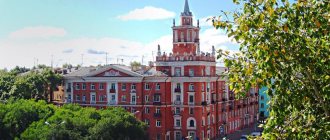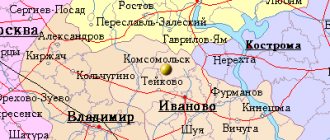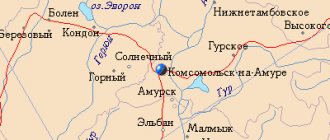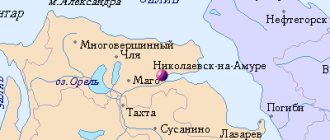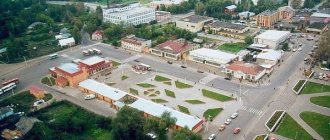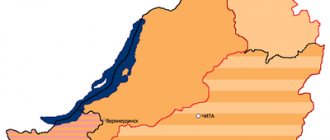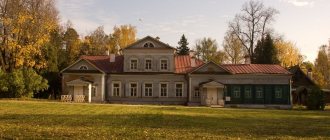Komsomolsk-on-Amur is a city in the Khabarovsk region of Russia. Administrative center of the Komsomolsky municipal district. Forms the municipal formation of the urban district "City of Komsomolsk-on-Amur".
The population of the city is 250,977 people. (2016), the second largest city in the region and the fourth in the Russian Far East. Located on the left bank of the Amur River, 404 km northeast of Khabarovsk (along the highway). The distance from Moscow by road is 8700 km.
The largest industrial center in the Far Eastern region. City-forming enterprises: shipbuilding, aircraft plant, oil refinery and metallurgical plants. Oil and gas pipeline from Sakhalin. Transport hub on the Baikal-Amur Mainline and regional highway; River port. There are technical and pedagogical universities.
It was formed by detachments of Komsomol members in 1932 in the middle of the taiga on the site of the village of Perm, founded in 1860, and the Nanai camp “Dzemgi”. In Soviet times, it was a military-industrial center of Union significance. Between 1959 and 1993 the city was closed to foreigners. The historical name is “city of youth”.
Etymology
The city, founded on the site of the village of Perm, received its name in memory of the Komsomol members - the first builders of the city on the Amur (although 70% of the builders were prisoners).
The nicknames of Komsomolsk are “city of youth”, “dig city”, “city at dawn” (from the 1940 play of the same name, dedicated to the builders of Komsomolsk-on-Amur).
The Leninsky district, which is the second, northeastern, half of the city, was assigned the name Dzyomgi, which once called the Nanai camp here. According to one of the three versions, it comes from the Nanai “birch grove”.
Notable residents[edit]
Alexey Chubrevich
- Alex Chubrevich, Israeli-Russian professional basketball player for Maccabi Haifa of the Israeli Super League.
- Anatoly Dyatlov, Deputy Chief Engineer of the Chernobyl Nuclear Power Plant
- Yuri Gazinsky, football player who scored the first goal of the 2018 World Cup, was born in the city.
- Alexandra Ivanovskaya, "Miss Russia 2005"
- Valentina Khetagurova (1914–1992), founder of Khetagurova
- Pasha Kovalev, professional dancer
- Sergei Plotnikov, hockey player for the Pittsburgh Penguins, NHL
- Ivan Shtyl, sprint kayak
Story
The village of Perm, 1866
In 1930, the All-Russian Central Executive Committee and the Government of the USSR adopted a resolution on the economic and cultural construction of the Far Eastern Territory, and in August 1931 a decision was made to build a shipbuilding plant. In January 1932, a government commission arrived in the village of Perm, located on the left bank of the Amur, and decided to build the Amur Shipyard here. At the same time, a decision was made to build an aircraft plant in the area of the Nanai camp of Dzyomgi.
On May 10, 1932, the steamships Comintern and Columbus landed about a thousand of the first builders of the future city on the Amur coast. Today, this event is remembered by a memorial stone and a monument to the first builders. Soviet citizens who arrived in the wild taiga region lived in barracks and huts, and army tents. According to official data, the city was founded in 1932 by political prisoners, civilians, as well as Komsomol activists from the central regions of the Soviet Union.
The city was officially formed by the Decree of the Presidium of the All-Russian Central Executive Committee of December 10, 1932. In the 1990s, Komsomolsk-on-Amur was often called the criminal capital of the Far East.
In the 1990s. In connection with the catastrophic situation in the city's electric power industry, the issue of using the electrical energy of nuclear submarines located on the stocks of the ZLK with nuclear reactors turned on (10% of power for technical support) was seriously discussed. Since that time, the situation with energy supply in Komsomolsk has improved, but still city lighting is completely turned off at night in order to save money and reduce the load on the network.
Climate[edit]
Komsomolsk-on-Amur has a humid continental climate (Köppen Dfb
). Temperatures in the city area typically vary by more than 56 °C (100.8 °F) throughout the year, with a daily average of -24.7 °C (-12.5 °F) in January, up from +20.3 °C (68.5 °F) in July.
| Climate data for Komsomolsk-on-Amur | |||||||||||||
| Month | Jan | Feb | Mar | Apr | May | Jun | Jul | Aug | Sep | October | But I | December | Year |
| Record high °C (°F) | 0,7 (33,3) | 0,0 (32,0) | 13,6 (56,5) | 23,9 (75,0) | 31,0 (87,8) | 33,2 (91,8) | 36,2 (97,2) | 38,0 (100,4) | 30,0 (86,0) | 20,5 (68,9) | 8,3 (46,9) | 1,0 (33,8) | 38,0 (100,4) |
| Average high °C (°F) | -19,6 (-3,3) | -13,9 (7,0) | -4,0 (24,8) | 7,5 (45,5) | 16,1 (61,0) | 22,8 (73,0) | 25,1 (77,2) | 23,4 (74,1) | 17,1 (62,8) | 7,4 (45,3) | -6,4 (20,5) | -17,2 (1,0) | 4,6 (40,3) |
| Daily average °C (°F) | -24,7 (-12,5) | -19,8 (-3,6) | -9,5 (14,9) | 2,3 (36,1) | 10,4 (50,7) | 17,3 (63,1) | 20,3 (68,5) | 18,5 (65,3) | 11,9 (53,4) | 2,5 (36,5) | -10,5 (13,1) | -21,8 ( -7,2 ) | -0,6 (30,9) |
| Average low °C (°F) | -30,8 (-23,4) | -27,2 (-17,0) | −17,1 (1,2) | -3,4 (25,9) | 3,7 (38,7) | 10,8 (51,4) | 15,2 (59,4) | 13,5 (56,3) | 6,4 (43,5) | -2,9 (26,8) | -16,1 (3,0) | -27,4 ( -17,3 ) | -6,6 (20,1) |
| Record low °C (°F) | -47,0 (-52,6) | -42,0 (-43,6) | -33,9 (-29,0) | -20,8 (-5,4) | -7,5 (18,5) | -2,2 (28,0) | 0,0 (32,0) | -8,9 (16,0) | -6,0 (21,2) | -22,0 (-7,6) | -34,0 (-29,2) | -42,0 (-43,6) | -47,0 (-52,6) |
| Average precipitation, mm (inches) | 30 (1,2) | 19 (0,7) | 30 (1,2) | 43 (1,7) | 63 (2,5) | 65 (2,6) | 95 (3,7) | 110 (4,3) | 74 (2,9) | 62 (2,4) | 49 (1,9) | 32 (1,3) | 669 (26,3) |
| Average number of days with precipitation | 14 | 12 | 13 | 15 | 15 | 13 | 15 | 14 | 14 | 13 | 16 | 15 | 169 |
| Average rainy days | 0 | 0 | 1 | 7 | 14 | 13 | 15 | 14 | 14 | 8 | 1 | 0 | 87 |
| Average snow days | 14 | 12 | 13 | 11 | 3 | 0 | 0 | 0 | 0 | 8 | 15 | 15 | 91 |
| Source 1: climbase.ru [17] | |||||||||||||
| Source 2: Weatherbase [18] | |||||||||||||
“Made with us” and on Yandex.Zen
© img.geliophoto.com
Komsomolsk-on-Amur is rightfully considered the industrial capital of the Far East. Here they cook steel and refine oil, build ships and airplanes. It is also a transport hub that plays an important role in ensuring the sustainable operation of the BAM. Komsomolsk-on-Amur is the second largest city in the Khabarovsk Territory and the fifth in the Russian Far East. Located on the left bank of the Amur, 300 km from Khabarovsk and 6000 km from Moscow.
1. The city is located at the intersection of transport routes: to the west - the BAM, to the northeast - the waterway along the Amur River to Nikolaevsk-on-Amur and further to the Sea of Okhotsk, gas and oil pipelines from Sakhalin; in the east - the railway to the seaport of Vanino and Sovetskaya Gavan; and southwest - the Amur River, railway and highway to Khabarovsk.
© img.geliophoto.com
2. The construction of the city was due to the need to build shipbuilding and aircraft factories - outposts of the defense industry of the Far East. In May 1932, a landing force of pioneers landed on the bank of the Amur near the village of Perm. Soon a large construction site developed here, where both civilians, including Komsomol members, and prisoners worked. The City of Youth, as it was unofficially called, was growing: already in 1939, more than 70 thousand people lived in it. By that time, the railway, stretched from the Trans-Siberian Railway, came here.
© img.geliophoto.com
3. The city stretches along the left bank of the Amur River for more than 30 km. Its façade faces the river, the width of its bed within the city reaches 2.5 km.
© img.geliophoto.com
4. Now more than 240 thousand people live in the city, this is a fifth of the total population of the Khabarovsk Territory.
© img.geliophoto.com
5. In terms of output, the city is the largest industrial center in the Far East. The Aviation Production Association named after Yu. A. Gagarin (JSC KnAAPO) produces Su-27, Su-30, Su-33, Su-35 fighters, the latest Su-57 and their modifications, as well as the Sukhoi Superjet 100 passenger aircraft; Amur Shipyard - builds submarines and surface combat ships for the Navy, as well as vessels of various classes and purposes. This is the only enterprise in the Far East that has a base for the construction of ships with a nuclear power plant; metallurgical specializes in ferrous metallurgy; The Komsomolsk Oil Refinery is the largest oil refining complex in the Far East.
© img.geliophoto.com
6. According to the General Plan, the city envisaged the construction of 10 high-rise buildings with towers and spiers, forming the silhouette of the city. Of the three implemented projects, the first was this residential building on Mira Avenue.
© img.geliophoto.com
7. Peace Avenue.
© img.geliophoto.com
8. Komsomolsk-on-Amur is divided into two historical parts: Dzyomgi, which appeared during the construction of an aircraft plant and, in which the main enterprise was a shipbuilding plant.
© img.geliophoto.com
9. A house with a spire is a symbol of the city.
© img.geliophoto.com
10. The core of the composition is a stepped corner tower topped with a spire.
© img.geliophoto.com
11. The tower spire is topped with a bronze star.
© img.geliophoto.com
12. The residential building was built in 1956 for workers of the Amurstal plant. Previously, on the facade of the house from Lenin Avenue there was an inscription “Labor in the USSR is a matter of honor, valor and heroism.”
© img.geliophoto.com
13. Lenin Square is the main square of the city.
© img.geliophoto.com
14. The city received its name in memory of the Komsomol members who were the first builders of the city on the Amur. Unofficially it has the name “City of Youth”. In colloquial speech the name “Komsa” is common.
© img.geliophoto.com
15. A residential building with a large arch at 31 Kirova Street. Built in 1937 for shipyard workers. The first brick apartment building in the city.
© img.geliophoto.com
16. Palace of Culture of Shipbuilders.
© img.geliophoto.com
17. Youth Square at the intersection of Mira Avenue and Labor Alley.
© img.geliophoto.com
18. Graffiti "Sukhoi Superjet 100". The production of this aircraft and its final assembly are carried out by the KnAAZ aviation plant with the direct participation of other factories in Russia, where the components of the SSJ 100 are manufactured.
© img.geliophoto.com
19. Memorial complex to those killed in the Great Patriotic War.
© img.geliophoto.com
20. The time difference with Moscow is 7 hours.
© img.geliophoto.com
21. Apple orchard. "Parachute".
© img.geliophoto.com
22. Komsomolsk-on-Amur is located in a kind of “oasis” - the Amur floodplain, the width of which reaches 20 km.
© img.geliophoto.com
Links[edit]
Notes[edit]
- ^ abcde Resolution No. 143-pr.
- "Query result". www.gks.ru.
_ Retrieved November 1, 2022. - ^ a b Federal State Statistics Service (2011). “All-Russian Population Census 2010. Volume 1" [All-Russian Population Census 2010, vol. 1]. All-Russian Population Census 2010 [All-Russian Population Census 2010]
. Federal State Statistics Service. - https://habstat.gks.ru/wps/wcm/connect/rosstat_ts/habstat/resources/4fcf3a80408ea6bca127eb4d45abe5e4/Number+of+population+of+Khabarovsk+territory+by+municipal+educationmm+on+1+year+January+2018+ .
- State Committee of the Russian Federation on Statistics. Committee of the Russian Federation for Standardization, Metrology and Certification. No. OK 019-95 January 1, 1997 “All-Russian classifier of objects of administrative-territorial division. Code 08 409", ed. changes No. 278 / 2015 dated January 1, 2016. (Goskomstat of the Russian Federation. Committee of the Russian Federation for Standardization, Metrology and Certification. No. OK 019-95 January 1, 1997. Russian classification of administrative divisions) (OKATO).
Code 08 409 , as amended by Amendment No. 278/2015 dated 01/01/2016). - ^ ab State Committee of the Russian Federation on Statistics. Committee of the Russian Federation for Standardization, Metrology and Certification. No. OK 019-95 January 1, 1997 “All-Russian classifier of objects of administrative-territorial division. Code 08 220”, ed. changes No. 278 / 2015 dated January 1, 2016. (Goskomstat of the Russian Federation. Committee of the Russian Federation for Standardization, Metrology and Certification. No. OK 019-95 January 1, 1997. Russian classification of administrative divisions) (OKATO).
Code 08 220 , as amended by Amendment No. 278/2015 of 01/01/2016). - ^ abc Law No. 192
- Law No. 264
- "On the Calculation of Time". Official Internet portal of legal information
. June 3, 2011. Retrieved January 19, 2022. - Post office. Information and computing center of OASU RPO. ( Post office
).
Search for postal service objects ( postal Search for objects
) (in Russian) - ↑
Federal State Statistics Service of Russia (May 21, 2004).
“The population of Russia, the constituent entities of the Russian Federation as part of federal districts, urban settlements, settlements, settlements of 3 thousand or more people” [Population of Russia, its federal districts, federal districts, districts, urban settlements, rural settlements - administrative centers and rural settlements with a population of more than 3,000 people] (XLS). All-Russian Population Census 2002
. - “All-Union Population Census of 1989. The current population of union and autonomous republics, autonomous regions and districts, territories, negative phenomena, urban settlements and villages.Team.Aero - Sukhoi rolls out Superjet 100 in Aeroflot livery.” Team.Aero
. Retrieved November 1, 2022. - “How many MiG-15s were produced per year?” . aviation.stackexchange.com
. Retrieved November 1, 2022. - https://www.oldwings.nl/st/li2.pdf
- "climbase.ru (1948-2011)". Retrieved April 28, 2012.
- "Weather database: historical weather for Komsomolsk-on-Amur, Russia". Weather database. 2012. Retrieved November 24, 2011.
- ↑
Komsomolsk-on-Amur. Archived August 12, 2009, at the Wayback Machine. - "Overview of Komsomolsk-on-Amur". Retrieved November 1, 2022.
- ^ ab Pike, John. “KNAAPO Komsomolsk-on-Amur Aviation Production Association named after Gagarin - Russian.” www.globalsecurity.org
. Retrieved November 1, 2022. - www.uacrussia.ru
https://web.archive.org/web/20090131153815/https://www.uacrussia.ru/en/companies/index.php?id4=47 . Archived from the original on January 31, 2009. Retrieved November 1, 2022. Missing or empty |title=( help ) - Satellite. "Crew member hacked by temperature sensor on submarine Nerpa". en.rian.ru.
_ Retrieved November 1, 2022. - "Sukhoi T-50 prototype flies for first time in 40 minutes of flight". Retrieved November 1, 2022.[ permanent dead link
] - "Twin Cities". kmscity.ru
(in Russian). Komsomolsk-on-Amur. Retrieved February 4, 2020.
Sources [edit]
- Government of the Khabarovsk Territory. Resolution No. 143-pr of July 18, 2007 “On approval of the register of administrative-territorial and territorial units of the Khabarovsk Territory,” as amended. Resolution No. 273-pr dated August 28, 2015 “On amendments to the Resolution of the Government of the Khabarovsk Territory dated July 18, 2007 No. 143-pr “On approval of the register of administrative-territorial and territorial units of the Khabarovsk Territory””. Entered into force on August 13, 2007. Published: “Collection of Legislation of the Khabarovsk Territory”, No. 7 (60), August 12, 2007 (Government of the Khabarovsk Territory. Resolution No. 143-pr dated July 18, 2007 “ On approval of the Register of administrative territorial formations and territorial units of the Khabarovsk Territory"
as amended by Resolution No. 273-pr dated August 28, 2015.
On amendments to the Decree of the Government of the Khabarovsk Territory dated July 18, 2007 No. 143-pr "On approval of the Register of administrative-territorial and territorial units of the Khabarovsk Territory "
. Effective from August 13, 2007). - Legislative Duma of the Khabarovsk Territory. Law No. 192 of June 30, 2004 “On granting the municipal formation of the city of Komsomolsk-on-Amur the status of an urban district and on establishing its borders.” Came into force on the date of official publication. Published: “Priamurskie Gazette”, No. 136–137, July 29, 2004 (Legislative Duma of the Khabarovsk Territory. Law No. 192 of June 30, 2004 “ On assigning the status of an urban district to the municipal formation of the city of Komsomolsk-on-Amur and on establishing its boundaries
... Comes into force on the date of official publication.) - Legislative Duma of the Khabarovsk Territory. Law No. 264 of March 14, 2005 “On administrative centers of rural settlements and municipal communications of the Khabarovsk Territory,” as amended. Law No. 239 of November 28, 2012 “On the transformation of the urban settlement of the working village of Tyrma, located on the territory of the Verkhnebureinsky district of the Khabarovsk Territory, by changing its status into a rural settlement - the village of Tyrma and introducing amendments to certain Laws of the Khabarovsk Territory.” Came into force on the date of official publication. Published: “Priamurskie Vedomosti”, No. 57, April 1, 2005 (Legislative Duma of the Khabarovsk Territory. Law No. 264 of March 14, 2005 “ On the administrative centers of rural settlements and municipalities of the Khabarovsk Territory”
as amended by Law No. 239 of November 28 2012
On the transformation of the urban settlement of Tyrma, located on the territory of the Verkhnebureinsky district of the Khabarovsk Territory, by changing its status to a rural settlement - the village of Tyrma and on amendments to various laws of the Khabarovsk Territory
... Effective from the date of official publication.).
Source of the Amur River
The river begins at the confluence of the Tunguska and Argun rivers. But in general, the source of the Amur River is considered to be the Onon River in Mongolia. Because of this, some sources indicate that in addition to Russia and China, its waters also wash Mongolian lands. You can also find another length value - 4279 km (from the source of the Onon to the Sea of Okhotsk, where the Amur River flows).
The Onon is a turbulent stream, which is also a tributary of the Shilka. The name “Onon” in the Mongolian dialect sounds like “ruin, ruin.” Old-timers are very respectful of it and like to add notes of mysticism to their stories. There is a legend about mysterious pools that suck people in. Also, according to ancient legends, Genghis Khan was born on the banks of the Onon River.
